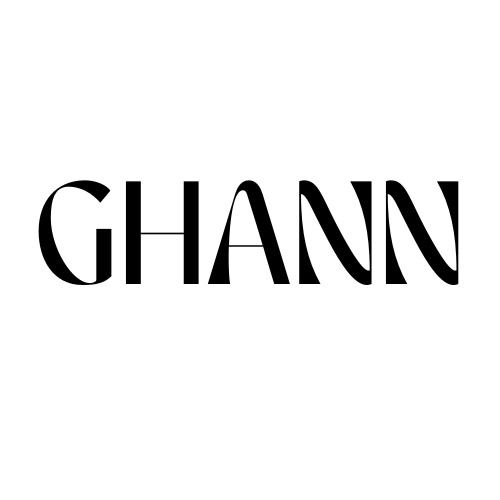How B2B Founders Build a Personal Brand on LinkedIn
If you’re a B2B founder, your personal brand is often more powerful than your company’s. People buy from people. Your prospects are more likely to trust your insights and stories than a polished corporate page.
The good news? Building a personal brand on LinkedIn doesn’t require 40 hours a week. It requires clarity, consistency, and a simple system. Here’s a step-by-step process to build a founder brand that attracts clients and opportunities.
👉 Want to skip the guesswork? The Sell on LinkedIn DIY Kit gives you headline formulas, About templates, post outlines, and DM scripts so you can build your personal brand faster.
Step 1: Clarify Your Positioning
Your brand begins with one sentence: who you help, what problem you solve, and the outcome you deliver.
Formula: “I help [ICP] solve [problem] with [solution/outcome].”
Examples:
“I help SaaS founders shorten sales cycles with content that builds trust.”
“I help HR leaders cut turnover with employee engagement programs.”
This clarity anchors your headline, posts, and DMs. Without it, your personal brand drifts.
👉 Use the ICP Worksheet to sharpen this before you start posting.
Step 2: Optimize Your LinkedIn Profile
Your profile is not a resume... it’s a landing page. Every visitor should instantly understand who you help and why they should trust you.
Checklist:
Headline: client-facing promise (not just “Founder at X”).
Banner: visual tagline or proof point.
About section: write like a mini sales page — pain, solution, proof, CTA.
Featured section: pin a resource, case study, or booking link.
Experience: highlight achievements and outcomes, not job descriptions.
Once optimized, your profile works 24/7, even when you’re not online.
Step 3: Choose Your Content Pillars
Your personal brand grows when you post consistently about themes that matter to your buyers.
Pick 3–4 pillars:
Authority: frameworks, industry insights, predictions.
Storytelling: your founder journey, lessons learned, mistakes.
Proof: case studies, results, testimonials.
Engagement: prompts, polls, behind-the-scenes moments.
Stick to these pillars so your audience knows what to expect. Random content = random results.
Step 4: Post Consistently (2–3x per Week)
You don’t need to post daily. Quality beats volume.
Weekly rhythm example:
Tuesday: Authority post (e.g., “3 mistakes founders make with outbound.”)
Thursday: Story post (e.g., “When I almost quit, and what I learned.”)
Friday: Proof post (e.g., “We helped a SaaS founder add $50K ARR in 90 days.”)
This rhythm balances trust, relatability, and credibility. If you don't know where to start, try following my best LinkedIn routine for B2B leads cadence!
Further Reading: How do I Get More Followers on LinkedIn?
Step 5: Use the 15-Minute Engagement Routine
Your posts build visibility. Your comments build relationships. Combine both.
Daily checklist:
Comment on 2 posts from your ICP.
Comment on 1 post from an industry leader.
Respond to all comments on your posts.
Send 1 personalized connection request.
That’s it. 15 minutes a day.
Step 6: Leverage Your Stories
As a founder, your unfair advantage is your story. Don’t be afraid to talk about:
Why you started the company.
Mistakes and lessons learned.
Behind-the-scenes of building.
Client wins (with or without names).
These posts humanize you. They’re often the ones that get the most engagement and bring in unexpected opportunities.
Step 7: Build a Content-to-Conversation Funnel
Your goal is not just engagement. It’s conversations.
Add a call to action at the end of posts: “Want the full playbook? DM me.”
Pin a lead magnet in Featured (e.g., a checklist or toolkit).
Use DMs to follow up with people who engage.
This turns likes and comments into pipeline.
Step 8: Align With Your Company Page
Your personal brand shouldn’t exist in a silo. Make it work together with your company presence and be sure to optimize your B2B LinkedIn company page.
Reshare key posts to the company page.
Feature company resources on your profile.
Encourage your team to engage with your posts.
When both personal and company brands reinforce each other, you build credibility faster.
Step 9: Track and Adjust
Every month, track:
Profile views from ICP job titles.
Connection requests from ideal buyers.
Engagement on authority/proof posts.
DMs and calls booked that started from LinkedIn.
If you’re not seeing traction, tweak one element at a time — headline, content mix, or CTAs.
Common Mistakes B2B Founders Make
Posting randomly. Without pillars, you confuse your audience.
Making it about you, not them. Focus on ICP pain points, not just founder updates.
Overthinking content. Simple, authentic posts often outperform polished ones, so make sure you have a LinkedIn Content Strategy for B2B so you always have ideas to draw from.
Ignoring DMs. That’s where deals actually start.
Case in Point
A founder I worked with in the SaaS space had only been using LinkedIn to post hiring updates. Once we reworked his profile, gave him content pillars, and a daily engagement routine, he booked 11 new calls in 60 days. All from LinkedIn.
Not by spamming. Not by running ads. Simply by showing up as himself in a structured, client-facing way.
TL;DR
Clarify positioning: who you help + problem solved.
Optimize your profile like a landing page.
Pick 3–4 content pillars and post 2–3x weekly.
Spend 15 minutes daily engaging with ICPs.
Share your founder story — people connect with people.
Funnel posts → conversations → pipeline.
Align with your company page for credibility.


